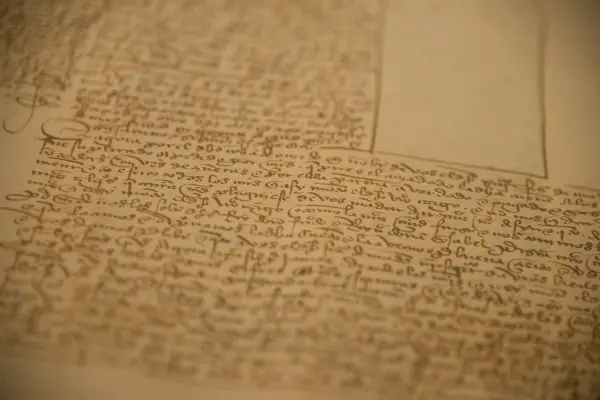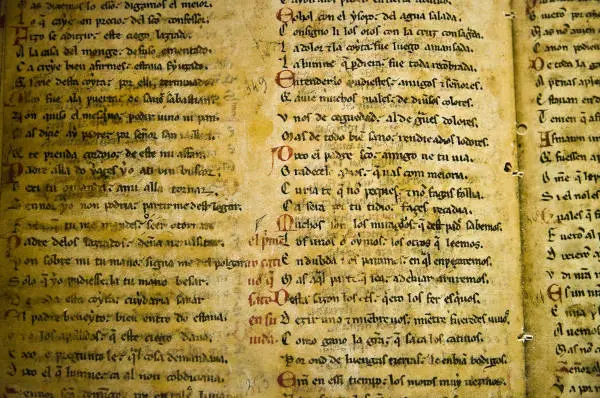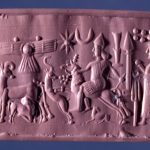In medieval England, words held a significance far beyond simple communication. They were seen as vessels of power, capable of influencing the physical and spiritual realms. This belief was especially prevalent in the context of healing, where written charms and amulets played a crucial role. The act of writing words imbued objects with a unique force, transforming ordinary items into powerful tools for health and protection.
The destruction of text, therefore, was not merely an act of physical violence. It was a symbolic gesture, laden with meaning and intention. Destroying a text could release the power contained within the words, activating their beneficial effects. This practice was deeply rooted in the belief that words, once written, carried an inherent potency that could be harnessed or neutralized through their destruction.
For instance, burning a book was seen as an attack on the ideas and knowledge it contained, a form of violence more profound than simply destroying an object. This act could erase the influence of the text, but in the context of medieval charm practices, it could also unleash the latent power within the words, turning destruction into a creative act. The ritualistic destruction of written charms highlights a complex understanding of textual power, where the materiality of the text was intertwined with its spiritual and magical significance.
Medieval charm texts often required the physical destruction of written words as part of their healing rituals. This destruction was believed to either activate the healing properties of the text or to contain and neutralize its influence on the body. Such practices reflect a nuanced view of text as a dynamic force, capable of affecting reality in profound ways.
The symbolic violence of destroying text in medieval England thus reveals a multifaceted relationship with written words. It underscores a deep respect for the power of language and a recognition of the potent effects that written words could have on the world and the individuals within it.

The Healing Power of Textual Amulets
Textual amulets were a fascinating aspect of medieval healing practices, where words were seen as carriers of divine or magical power. These written charms were believed to protect individuals from harm and cure various ailments. The concept was based on the idea that specific words, often derived from religious texts or ancient traditions, could invoke healing forces when inscribed on objects or directly on the body.
Medieval healers and scholars collected numerous charm instructions, each tailored to address different conditions. These collections, often found in manuscripts, offer a glimpse into the diverse and rich traditions of medieval medicine. Charms could be written on parchment, paper, or even edible substances like bread and cheese, which were then consumed to transfer their healing properties into the body.
One notable collection is found in the “Lacnunga,” a compendium of medical texts and charms from Anglo-Saxon England. This manuscript includes various types of charms, from simple prayers to complex rituals involving multiple steps. For example, one charm instructs the healer to write a specific passage on a piece of bread, which the patient must then eat to cure a fever. Another involves writing on an apple to be consumed to treat a headache.
These textual amulets were not limited to physical healing but also addressed spiritual and psychological ailments. Charms for protection against evil spirits, enhancing fertility, or ensuring safe childbirth were common. The instructions often included detailed steps on how to prepare the charm, when to use it, and the specific words to be written, underscoring the meticulous nature of these practices.
The historical context of these charm collections reveals a time when the boundary between medicine, religion, and magic was fluid. Medieval people believed that invoking the right words in the right manner could draw upon supernatural forces to bring about healing. This practice was deeply intertwined with the cultural and religious beliefs of the time, reflecting a worldview where the material and spiritual realms were closely connected.
The use of textual amulets demonstrates the medieval understanding of words as powerful tools for intervention in the natural world. It highlights the ingenuity and resourcefulness of medieval healers, who blended written language with ritual to create potent remedies for a wide range of ailments.

Activation and Limitation through Destruction: Two Broad Categories
In medieval healing practices, the destruction of written text was often seen as a means to activate its latent power. This belief rested on the idea that the physical act of destroying the text could release the energy or magic contained within the words, making their effects manifest in the world.
There were two broad categories within this practice: one that saw destruction as a way to activate the power and another that viewed it as a method to limit or contain the text’s influence.
Activating Power through Destruction
The first category involves the belief that destroying the text can unleash its healing or protective properties. This practice was rooted in the idea that written words held a concentrated form of power that needed to be released to be effective.
For example, a charm might instruct the healer to write a specific set of words on parchment and then burn it, allowing the smoke to carry the words’ power to the patient. This ritualistic burning symbolized the transformation of the written word into an active force.
In some cases, the destruction involved dissolving the written words in liquid, which was then consumed by the patient. This method ensured that the power of the words was directly absorbed into the body, integrating the healing properties with the individual’s physical being. The destruction of the text in this manner was a crucial step, as it marked the transition from a static written form to a dynamic, activated state.
Related Reading: “Medieval Persecution of Magic – The Inquisition and the inquisitor’s profile“– Opens in new tab
Limiting the Text’s Effect through Destruction
Contrastingly, the second category of belief held that destroying the text could limit or contain its effects. This perspective saw the written word as inherently powerful, capable of continuing to exert influence as long as it existed in written form. To prevent the unwanted or continuous influence of a charm, it was sometimes necessary to destroy the text after its initial use.
For instance, a protective charm might be written to guard against a specific threat. Once the threat had passed, the charm would be burned or otherwise destroyed to neutralize its power and prevent any residual effects. This practice reflects a cautious approach to the power of words, emphasizing control and containment to avoid unintended consequences.

Balancing Activation and Containment
The dual nature of text destruction in medieval charm practices highlights a sophisticated understanding of textual power. Healers and practitioners balanced the need to activate the beneficial properties of written charms with the necessity of containing their influence on specific circumstances. This balance ensured that the potent forces invoked by these texts were harnessed effectively and safely.
Writing on Food: A Pathway to Healing
In medieval England, one of the most intriguing practices for healing involved writing charms directly onto food. This method was not just a quirky tradition but a deeply rooted belief in the power of the written word to convey healing properties.
The idea was simple yet profound: by inscribing certain texts onto edible items, the inherent power of these words would be transferred to the food, which, when consumed, would then impart its healing properties to the body.
Examples of Food-Based Charms and Their Intended Effects on the Body
One notable example is the childbirth charm found in the British Library’s Egerton Manuscript 833. The charm instructs the user to write the phrase “Sator arepo tenet opera rotas” on butter or cheese and have the expectant mother eat it.
This phrase, a well-known palindrome, was believed to invoke protective and beneficial forces during childbirth. The text, once consumed, is thought to continue exerting its influence inside the body, facilitating a smoother delivery process.
Another example includes charms written on apples to combat fever. In some instances, the text inscribed would command the fever to leave the patient’s body. These texts were not merely symbolic; they were direct orders to the ailment, reflecting the belief that diseases could understand and obey written commands. Apples, with their wholesome and natural connotations, served as a fitting medium for these healing directives.
These practices extended beyond just human ailments. For instance, charms written on bread were used to ensure the health of livestock, such as pigs. By consuming the bread, the animals were believed to absorb the protective power of the written words, safeguarding them against illness.
The use of food in these charms highlights the medieval understanding of the interconnectedness between the physical and spiritual realms. By eating the inscribed words, individuals and animals alike were thought to internalize the protective and healing powers embedded within the texts, demonstrating a fascinating blend of faith, tradition, and the perceived magic of the written word.
Related reading: The Contradictory Worlds of Scientism and Post-Truth in Contemporary Shamanism – Opens in new tab

Drinking the Written Word: A Potion for Health
Medieval England had a fascinating tradition of using written words for healing, one intriguing method being the dissolution of charms in liquids to be consumed by patients. This practice, second only to eating written words, harnessed the perceived enduring power of the text even after its physical form had been destroyed.
Charms Dissolved in Liquids
Healing charms dissolved in liquids were a popular method against ailments such as difficult childbirth, fever, and epilepsy (referred to as “falling evil”). These charms were believed to transfer the power of the written words into the liquid, which would then be consumed by the patient.
This consumption was thought to allow the power of the text to enter and heal the body from within. Interestingly, the efficacy of these charms was believed to persist despite the destruction of the text in the liquid, suggesting that the power of the written word could survive beyond its physical form.
Related Reading: “Medieval Witch Trials in Europe”– Opens in new tab
Examples of Liquid-Based Charms
Numerous examples illustrate the varied applications of this practice. One such charm involved writing specific phrases on a substance, dissolving it in water, and then drinking the mixture to treat fever.
Another involved a more complex ritual from the “Book of Numbers” in the Bible, where a written curse was dissolved in bitter water to test a woman’s fidelity. If guilty, the curse would manifest physically, highlighting the belief in the enduring and activating power of dissolved words.
These liquid-based charms often involved sacred texts, indicating a deep intertwining of religious faith and healing practices. For instance, charms against fever might include phrases like “I conjure you, fevers, not to harm this servant of God,” written on a substance that was then dissolved and consumed. The ink, having formed the sacred words, was believed to retain their power, suggesting that the essence of the text transcended its material medium.
The Enduring Power of Dissolved Words
The underlying assumption in these practices was that the power of the written words could be transmitted through the ink into the liquid, retaining its healing properties even after the text itself had disappeared.
This belief underscores the medieval view that written words held an intrinsic power that could interact with the physical and spiritual realms. The process of dissolving the text in liquid was not just about physical consumption but about transferring the inherent power of the words into the patient’s body, thus initiating the healing process from within.
Contain and Control the Power of Text Through Destruction
The written word in medieval charms was seen as independently powerful, capable of exerting influence simply by existing in physical form. However, this ability of the text necessitated measures to contain and control this power once it had served its purpose. Destroying the text was a common method to neutralize its effects.
The act of burning, dissolving, or otherwise obliterating the written words was seen as essential to prevent any unintended consequences. This destruction ensured that the power of the text would not linger or be misused, highlighting a profound respect for the potency of written words.
Burning the text was particularly symbolic. It represented the ultimate erasure of the written word’s power, transforming it into smoke and ash, which could no longer exert influence. This act of destruction was not merely a practical measure but also a ritualistic one, reinforcing the control over the supernatural forces that the text had invoked.
Similarly, dissolving written charms in liquid before consumption allowed the healer to harness the text’s power in a controlled manner. Once the liquid was drunk, the words’ power was believed to integrate into the body, while the physical form of the text ceased to exist. This practice balanced the activation of the charm’s effects with the need to safely manage its power.

Conclusion: The Enduring Legacy of Medieval Charms
The destruction of text in medieval healing practices reveals a profound cultural understanding of the written word’s power. In an era when literacy was limited, the written word was seen as almost magical, imbued with divine or supernatural forces.
Destroying these texts was not a simple act of erasure but a deeply symbolic ritual. Burning or dissolving the text was believed to release its power, ensuring that its beneficial effects were fully realized or its potential dangers were neutralized. This practice highlights a nuanced relationship with written words, where their physical presence was both a source of strength and a potential threat if left uncontrolled.
Medieval people believed that words, once written, held an enduring power that could influence the physical and spiritual world. The ritualistic destruction of these texts was a way to manage and direct this power responsibly.
This respect for the written word underscores the broader cultural and spiritual beliefs of the time, where the material and immaterial worlds were closely linked. The destruction of text was thus a means to balance these worlds, using the power of words to heal while ensuring that this power did not become harmful or uncontrollable.
Related reading: Ancient Magic: From Divine Rituals to Dark Superstitions – Ancient Rome and Early Christianity – Opens in new tab

Consideration of How These Ancient Beliefs Inform Our Understanding of Textual Power Today
The legacy of medieval charms and the destruction of text continues to inform our understanding of the power of words today. While modern society may not view written words as magical, the idea that words have a significant impact remains strong.
In contemporary times, the power of language is recognized in various forms, from legal documents and contracts to the influence of media and literature. The ancient belief in the potency of the written word reminds us of the deep-seated human understanding that language shapes reality.
Moreover, the medieval practices of text destruction resonate with modern concepts of data management and privacy. Just as medieval healers destroyed texts to control their power, today we take measures to protect and destroy sensitive information to prevent misuse. This parallel underscores the timeless nature of managing the power of words and information, whether in the form of parchment charms or digital data.
In reflecting on these medieval practices, we gain a greater appreciation for the historical context of textual power. The rituals surrounding the creation, use, and destruction of written words in medieval healing provide valuable insights into how our ancestors perceived and harnessed the power of language. These ancient beliefs, while rooted in a different worldview, continue to influence how we understand and interact with the written word today.
Check out our recommendations at “Occult Bookshelf” and many free resources at our “Free Library“
Source: Hindley, Katherine Storm. “Eating Words and Burning Them The Power of Destruction in Medieval English Charm Texts”. Zerstörung von Geschriebenem: Historische und transkulturelle Perspektiven, edited by Carina Kühne-Wespi, Klaus Peter Oschema and Joachim Friedrich Quack, Berlin, Boston: De Gruyter, 2019, pp. 359-372. https://doi.org/10.1515/9783110629040-013
Stay in Touch
 Join our newsletter by using the forms on this website or click here!
Join our newsletter by using the forms on this website or click here! Follow us on Google News
Follow us on Google News Follow us on Facebook
Follow us on Facebook
Featured image by melanfolia меланфолія on Unsplash







